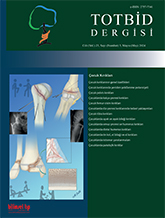
Foot and ankle fractures are common in children but require a special approach to treatment. These fractures should be treated differently from adults due to the active growth plates in children. Understanding the anatomy of the ankle and its surroundings in children at every stage of their development is crucial because some fractures can occur without severe pain, swelling or deformity. Therefore, the rational use of radiological examinations in conjunction with clinical assessment is of critical importance for diagnosis. The treatment approach can vary depending on the type of fracture, degree of displacement, and the child`s remaining growth potential. Non-displaced fractures are often immobilized with a cast. Displaced fractures may require closed or open reduction, and different internal fixation methods such as Kirschner wires or screws may be used. The success of reduction and the acceptable amount of residual displacement or deformity are associated with the child`s growth potential. In conclusion, pediatric foot and ankle fractures require a special approach in children. Diagnosis and the expected outcome of treatment should be tailored to each age group, with patients being managed according to their respective age groups.